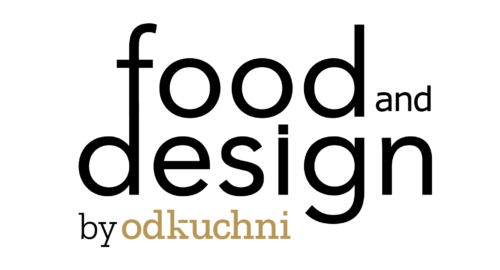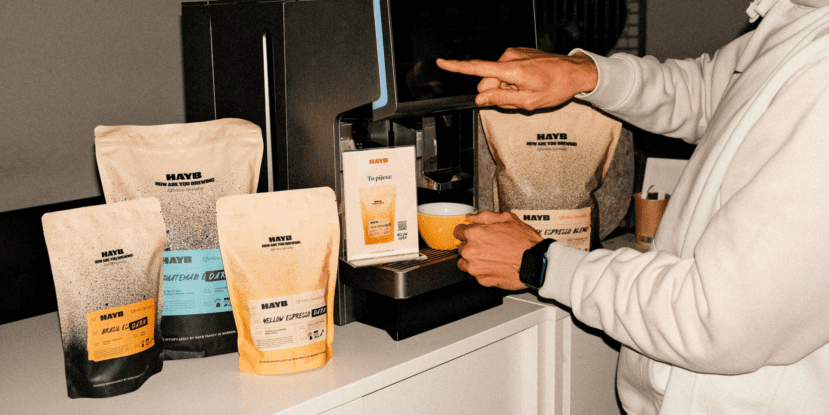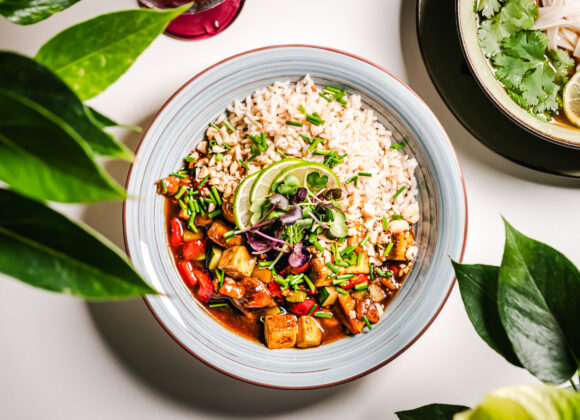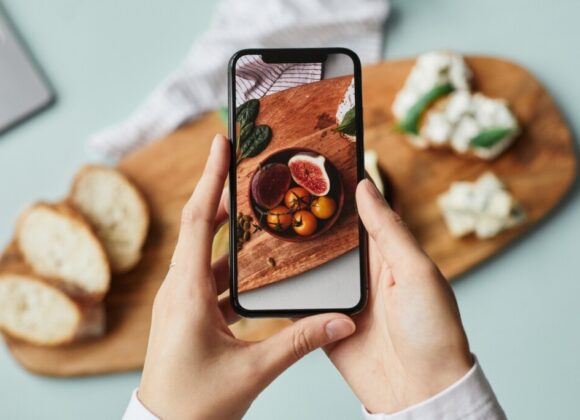W tym roku miną 4 lata od momentu, w którym zacząłem odpowiadać za e-commerce (a nieco później także i marketing) w warszawskiej palarni kawy speciality HAYB. Myślę więc, że to dobra okazja do tego, by krótko podsumować, jak wygląda prowadzenie foodowego e-commerce marki premium (i nie tylko!) w praktyce.
 Zanim jednak na dobre się rozkręcę i zacznę dzielić moimi przemyśleniami na temat bieżącego działania, wtrącę jeszcze krótkie wyjaśnienie. W przeciwieństwie do większości moich koleżanek i kolegów z palarni, ja nie przeszedłem typowej dla kawowej branży drogi „od pierwszej linii frontu w gastro do zaplecza”, a przetransferowałem się niejako poziomo – z działań e-commerce’owo-marketingowych w innej branży. Pozornie skrajnie innej, bo była to sprzedaż eleganckich, drogich ubrań. I mimo że specyfika produktów znacząco się różniła, dla mnie było to przejście o tyle naturalne, że zamieniłem monetyzację jednego hobby na drugie. Być może naiwnie, przeniosłem też przy tej okazji część przyzwyczajeń, co będzie w tym tekście kluczowe.
Zanim jednak na dobre się rozkręcę i zacznę dzielić moimi przemyśleniami na temat bieżącego działania, wtrącę jeszcze krótkie wyjaśnienie. W przeciwieństwie do większości moich koleżanek i kolegów z palarni, ja nie przeszedłem typowej dla kawowej branży drogi „od pierwszej linii frontu w gastro do zaplecza”, a przetransferowałem się niejako poziomo – z działań e-commerce’owo-marketingowych w innej branży. Pozornie skrajnie innej, bo była to sprzedaż eleganckich, drogich ubrań. I mimo że specyfika produktów znacząco się różniła, dla mnie było to przejście o tyle naturalne, że zamieniłem monetyzację jednego hobby na drugie. Być może naiwnie, przeniosłem też przy tej okazji część przyzwyczajeń, co będzie w tym tekście kluczowe.
Takie niekonwencjonalne podejście w praktyce często przejawiało się nawet bardzo zaskakującymi działaniami, lecz koniec końców – dziś już mogę to mówić z pełną odpowiedzialnością – zazwyczaj przynosiło nadzwyczaj dobre rezultaty!
Oczywiście jestem w stanie dostrzec ogromne różnice pomiędzy sprzedażą produktów za wysokie trzy- i niskie czterocyfrowe sumy w złotówkach, a kawą, której pojedyncza paczka rzadko kiedy wykracza ponad sto złotych, jednak uważam, że są prawidła słuszne niezależnie od tego, czym naprawdę handlujemy. Szczególnie gdy poruszamy się w segmencie premium, mamy w ofercie produkty w jakimś stopniu ekskluzywne bądź też kierujemy je przede wszystkim do świadomych pasjonatów, co na co dzień dotyczy mnie oraz zapewne wielu z Was.
Słowem wstępu
Na potrzeby mojego wywodu chętnie postawię tezę, że e-commerce w branży food jest jednym z bardziej wdzięcznych do prowadzenia. O jej słuszności decydować będzie – jak zazwyczaj – kwestia tego, czy umiejętnie korzystamy z szerokiego wachlarza możliwości, jaki tego rodzaju e-commerce daje, starając się wykorzystać jego zalety i omijać wady. Tak, brzmi banalnie – jak wiele takich rad – ale gdy przyjrzymy się bliżej, okaże się, że w praktyce wielu menedżerów sklepów internetowych po prostu tego nie robi, bazując na sztywnych, staromodnych przekonaniach.
Żeby to zobrazować najlepiej, opowiem trochę o tym, jak do tej pory działałem (i działam nadal), podejmując decyzję co do produktów i rozwoju naszego sklepu. Żeby było łatwiej, postaram się to rozpisać w formie łatwych do zrozumienia, czytelnych rad. Gotowi? Zaczynamy!
A, żeby było jasne – radząc, zakładam, że masz już i chcesz sprzedawać produkt, który broni się swoją jakością i jest w stosunku do niej uczciwie wyceniony – dla mnie to mus, bez tego nie wróżę Ci długofalowego sukcesu. 😉
Wykorzystaj oczywistą zaletę sektora FMCG
To FMCG – fast moving consumer goods, produkty szybkozbywalne. Food – jedzenie, produkt pierwszej potrzeby. Uświadom sobie, że handlujesz rzeczami, których ludzie potrzebują i niezmiennie (przynajmniej w pewnym uproszczeniu) będą potrzebować. Twoi klienci będą zamawiać je w odpowiednim momencie (czyt. „na ostatnią chwilę”), zużywać stosunkowo szybko… i powtórka. Załóż, że Twój produkt będzie zaspokajał jedną z ich podstawowych potrzeb, a jeśli spełni pokładane oczekiwania, najpewniej wybiorą go ponownie – czy to na co dzień, czy od święta, jeśli akurat mówimy o relatywnie drogich rzeczach. Nie musisz ciągle mierzyć się z problemem tego, jak zawczasu pomóc klientowi w racjonalizacji zakupu, jak zasiać w nim potrzebę zakupową – możesz założyć, że on już ją ma, a Ty musisz jedynie pojawić się w odpowiednim momencie, podsunąć mu rozwiązanie i za jego pomocą tę potrzebę w odpowiedni sposób zaspokoić.
Zwróć przy tym jednak uwagę na to, że ten klient będzie niecierpliwy, a to nie tylko plus. Może i decyzja zapadnie szybciej, ale koniec końców niecierpliwość sprowadza się do tego, że on swoją postawą będzie komunikował Ci, że właśnie zamawia coś, czego bardzo potrzebuje i chce to dostać jak najszybciej. Mimo że zazwyczaj nie płaci dużo (w ramach pojedynczej transakcji), oczekuje pośpiechu i jak najlepszej obsługi klienta. Wysyłka ma być sprawna, informacje na temat statusu zamówienia i dostawy aktualne, a produkt doręczony w odpowiednio zabezpieczonym opakowaniu. Jeśli dasz radę sprostać tym wymaganiom, a przy okazji zadbasz o coś dodatkowego, „coś ponadto”, co sprawi, że zamówienie pozornie zwykłej rzeczy, np. paczki kawy czy słoika masła orzechowego, stanie się dla niego wspaniałym doświadczeniem – gratuluję, wygrałeś!
Zadbaj o dobre doświadczenia
Mimo że obsługa klienta jest tak naprawdę na końcu całego łańcucha, uważam, że to właśnie od niej należy zacząć, by zadbać o pierwsze dobre wrażenie. Ponadto – nawet jak już zdobędziesz serce swojego nowego klienta, musisz dbać o jego utrzymanie, zachowując wysoki poziom. Pamiętaj, że w naszej branży typowa jest wysoka retencja klientów, wynikająca zarówno z faktu, że po zakupy trzeba po prostu wracać (bo zapasy się kończą), jak i z tego, że klient jest lojalny wobec marki (gdy kupuje coś często, szkoda mu czasu na zastanawianie się nad każdym wyborem). To miecz obosieczny: z jednej strony bardzo miło, że klient, którego raz pozyskałeś, z dużą dozą prawdopodobieństwa do Ciebie wróci, a z drugiej – wyłapie on każde odchylenie od normy, szczególnie na minus, jeśli jakość produktu bądź obsługi pogorszy się między jednym a drugim zakupem. Nie możesz opuszczać gardy – bądź cały czas gotowy i dbaj o to, by każde spotkanie klienta z Twoją marką (i Twoim sklepem) było równie dobre!
Nie będę Ci tutaj rzucał danych o tym, jak zwiększenie retencji o x% przyniesie zyski większe o y% – od tego są badania różnorakich agencji i wyniki wyszukiwania dla hasła „retencja klienta” w Google. Chcę podkreślić, że z doświadczenia wiem, jak ważna jest baza lojalnych klientów – nie tylko w kontekście powrotów po ulubione produkty, ale także testowania nowości i zbierania cennej, uczciwej opinii z rynku. Nie myśl o każdym zakupie jak o jednostkowym wydarzeniu – podchodź do tego na zasadzie budowania długoterminowej relacji, która będzie korzystna dla obu stron.

A, jeszcze jedno – jeśli uważasz, że mimo że działasz w branży food, to w Twoim przypadku jest to niewykonalne, bo np. sprzedajesz produkty bardzo drogie w stosunku do konkurencji, działasz w bardzo specyficznej niszy lub po prostu masz nierozwiązany problem z utrzymaniem klienta, też mam dla Ciebie rozwiązanie. Opiszę je nieco absurdalną metaforą (to moja specjalność): jeśli nie możesz być mężem, bądź kochankiem, jeśli nie możesz być zdrową dietą, bądź cheat mealem, jeśli nie możesz być chlebem, bądź tortem. Co to oznacza? Jeśli nie jesteś bezpiecznym, codziennym wyborem, obróć to w zaletę i stań się (za pomocą strategii cenowej, strategii produktowej, strategii komunikacji…) czymś nieco zakazanym, grzeszną przyjemnością, odskokiem od rzeczywistości. Czymś, co strasznie chce się mieć, nawet, gdy ten wybór stoi wbrew logice i zdrowemu rozsądkowi.
Dobrze przemyśl ofertę
I tak płynnie przechodzimy do „po trzecie” i „po czwarte”, które trochę zleją się w całość: tak, wbrew pozorom, produkty z branży food też mogą być produktami aspiracyjnymi. Tak, podczas ich kupowania można kierować się ogromnymi emocjami i impulsywnie dokonywać wyboru. I nie, nie odbywa to się tylko na ostatnim poziomie decyzji („jestem smutny, kolejka jest długa, wrzucę jednak ten batonik do koszyka”), ale już na poziomie samego wyboru marki czy sklepu. Musisz wziąć to pod uwagę przy działaniu w swoim e-commerce. Od siebie mogę dodać, że to właśnie takie produkty, takie ruchy, jeśli właściwie komunikowane, generują najwięcej ruchu i – ostatecznie – transakcji.
Najpierw – odnosząc się do aspiracji – weź pod uwagę, że produkty, które są Twoimi bestsellerami, wcale nie muszą być produktami, którym powinieneś poświęcać najwięcej uwagi i inwestować w nie marketingowo. Zaryzykowałbym stwierdzenie, że w naszej branży dużo ludzi nie zwraca na to uwagi, bagatelizuje tę kwestię, tłumacząc sobie, że „to przecież tylko kawa/olej/batonik/itp.”, a przy pozycjonowaniu kierując się jedynie konkurencją w danym segmencie, nie własną ofertą. To błąd!
Znów zilustruję to metaforą: ludzie, decydując się na Mercedesa A, kupują go nie dlatego, że sam w sobie jest naj-, ale dlatego, że mają w głowie określony obraz marki. Ten z kolei budowany jest przez najdroższe, najszybsze i najbardziej luksusowe modele – te, na które ich co prawda nie stać, ale chcą je mieć tak bardzo, że chętniej zdecydują się na tańszą namiastkę, która jest w ich zasięgu.
W uproszczeniu: w branży food jest tak samo. Nawet jeśli nie stać nas na flagowy produkt danej marki, chętnie kupimy jego tańszy wariant, wierząc, że skoro są w stanie zrobić coś tak dobrego, to nawet w tańszych produkcjach aspekt jakości również będzie dopieszczony. My obserwujemy w HAYB prostą zależność – gdy skupiamy się w komunikacji na tych najdroższych, najbardziej wyjątkowych i przy okazji najczęściej zmieniających się kawach, niejako „ciągną one” za sobą kawy tańsze, codzienne, bardziej przystępne dla przeciętnego klienta. Ostatecznie dopiero razem te produkty tworzą pełną ofertę, która jest nie tylko zdywersyfikowana pod kątem zasobności portfela klienta, ale także komunikacyjnie spójna, oferującą wiele odpowiedzi na jedną potrzebę.
Co do emocji i impulsów z kolei – jak mówiłem, o ile w branży food to zjawisko jest dobrze znane, głównie rozmawia się o nim w kontekście odpowiedniego lokowania produktów w fizycznych sklepach (klasyczne już półki przy kasach) lub sugestii dorzucenia w ostatniej chwili do koszyka jakiegoś drobnego produktu (to w sklepach online). Ja jednak chciałbym podkreślić, że można – a nawet powinno się – wykorzystywać tę grę na emocjach nie tylko po to, żeby koszyk zakupowy powiększać, ale także po to, żeby w ogóle klienta do przyjścia na zakupy zachęcać. Niezależnie od tego, jaki typ produktu sprzedajesz, jesteś w stanie wykorzystać skłonność do kolekcjonerstwa („o, próbowałem już kilku wariantów, ale tego jeszcze nie”), chęć poczucia ekskluzywności („limitowana edycja, mogę się nie załapać!”) czy skłonność do eksperymentowania („ciekawy smak, wezmę dla odmiany”). Pamiętaj, że dorzucanie takich nowości, choćby w krótkich seriach, też pociąga za sobą sprzedaż podstawowych produktów, stanowiących fundament oferty.
Znajdź pomysł na siebie
Na zakończenie dobrych rad chciałbym poruszyć jeszcze jedną kwestię, której sam poświęcam mnóstwo uwagi: nie ograniczaj się w komunikacji i sposobie prezentacji swoich produktów (także swojego sklepu) do koncentrowania się jedynie na jedzeniowym standardzie! Jasne, apetyczne, sensorycznie pobudzające, foodowe zdjęcia/filmy/teksty są ważne, ale jeśli poświęcisz się tylko im, to… pewnie znajdzie się ktoś, kto i tak zrobi to lepiej, angażując większy budżet, lepszych specjalistów i zbudowane doświadczenie. Jeśli natomiast wymyślisz inną strategię, znajdziesz swój pomysł, ciężej będzie innym Cię pokonać.
Gdy przychodziłem do palarni kawy prosto z branży, jak to pieszczotliwie mówię, ładnych i drogich ciuszków, byłem przyzwyczajony do tego, że komunikacja musi być oparta o dobre zdjęcia, charakterystycznych ludzi i pokazanie produktu w jego naturalnym środowisku – ogólnie szeroko pojęty lifestyle. Trudno było mi przestawić się na typowe dla branży pozbawione życia kompozycje – dlatego… raczej tego nie robiłem. To były raz mniej, a raz bardziej świadome decyzje, które stopniowo prowadziły do tego, że HAYB coraz bardziej dryfował w stronę bycia marką lifestyle, sprzedającą akurat produkt spożywczy, zamiast bycia typową marką food.
Okazało się, że dało się to zrobić bez większego problemu, a wiele doświadczeń czy refleksji na temat tego, co Ci się podoba i co uważasz za dobre do naśladowania, da się przeszczepić z jednej branży do drugiej. Wystarczy, że zamiast dać się zaszufladkować i myśleć o tym „co powinienem zrobić prowadząc foodowy e-commerce”, pomyśleć o tym, co chciałbyś zrobić ogólnie – i spróbować. Nie gwarantuję, że się uda, ale szansa na to, że tak będzie, jest większa, niż może Ci się wydawać!
Podsumowując…
Przechodząc do podsumowania – bo widzę, że zaczynam wchodzić zbyt głęboko w kwestie filozoficzne i ogólnobrandowe – chciałbym podkreślić, że to nie przypadek, że doszliśmy do rozważań na temat marketingu. Uważam, że nie da się zajmować sklepem internetowym – czy to jako właściciel, czy jako e-commerce manager – nie siedząc przy tym w marketingu*. To absolutna podstawa do zrozumienia potrzeb klientów i zaplanowania swoich działań.
Bez dobrej strategii – od tej produktowej, przez komunikacyjną, aż po „twardą” strategię e-commerce – trudno o odniesienie sukcesu!
Owszem, możesz spędzać mnóstwo swojego czasu, myśląc o kolejnych usprawnieniach UX, oglądać heatmapę Twojej strony, analizować ruch, robić research SEO i rozpisywać kolejne zmiany co wdrożenia – ale jeśli skupisz się tylko na tym, nie przykładając wagi do bardziej podstawowych, bliższych rdzeniu działalności kwestii, będziesz jedynie optymalizować zastaną sytuację, nie tworząc warunków do prawdziwego wzrostu. Bez produktu, bez jakości, nawet najlepsza platforma sama z siebie nie wygeneruje sprzedaży.
___
*Chyba że rozmawiamy o wielkich sklepach światowych gigantów, gdzie ta granica kompetencji między obszarami jest bardzo jasno nakreślona – ale zakładam, że jeśli to czytasz, to raczej budujesz lub rozbudowujesz e-commerce o znacznie mniejszej skali.












 Młodszy specjalista ds. komunikacji marketingowej i PR.
Młodszy specjalista ds. komunikacji marketingowej i PR.


 Absolwent Uniwersytetu Warszawskiego oraz Szkoły Głównej Gospodarstwa Wiejskiego. W branży HoReCa od ponad 10 lat. Przez lata związany z Grupą Trip, Sobienie Królewskie Golf and Country Club oraz restauracją Florentin w Warszawe.
Absolwent Uniwersytetu Warszawskiego oraz Szkoły Głównej Gospodarstwa Wiejskiego. W branży HoReCa od ponad 10 lat. Przez lata związany z Grupą Trip, Sobienie Królewskie Golf and Country Club oraz restauracją Florentin w Warszawe. Absolwentka Wydziału Architektury Politechniki Warszawskiej na kierunku Architecture for Society of Knowledge oraz Komunikacji Wizualnej na Politecnico di Milano. Specjalistka od budowania nastroju. Doświadczenie zdobywała w kraju i zagranicą podczas licznych warsztatów międzynarodowych (Sevilla, Lizbona, Florencja), stypendium na La Sapienza (Rzym) oraz pracując m.in. w Carmi e Ubertis i ADM Milano.
Absolwentka Wydziału Architektury Politechniki Warszawskiej na kierunku Architecture for Society of Knowledge oraz Komunikacji Wizualnej na Politecnico di Milano. Specjalistka od budowania nastroju. Doświadczenie zdobywała w kraju i zagranicą podczas licznych warsztatów międzynarodowych (Sevilla, Lizbona, Florencja), stypendium na La Sapienza (Rzym) oraz pracując m.in. w Carmi e Ubertis i ADM Milano.








 Menedżer z wieloletnim doświadczeniem w branżach kosmetycznej, spożywczej, dziecięcej. W trakcie swojej kariery związany z firmami takimi jak: L’Oreal, Samsung, Danone-Nutricia, Unilever. W ciągu swojego życia zawodowego odpowiadał między innymi za rozwój sprzedaży i contentu eCommerce w Polsce i krajach Europy Środkowo-Wschodniej.
Menedżer z wieloletnim doświadczeniem w branżach kosmetycznej, spożywczej, dziecięcej. W trakcie swojej kariery związany z firmami takimi jak: L’Oreal, Samsung, Danone-Nutricia, Unilever. W ciągu swojego życia zawodowego odpowiadał między innymi za rozwój sprzedaży i contentu eCommerce w Polsce i krajach Europy Środkowo-Wschodniej. 

























































